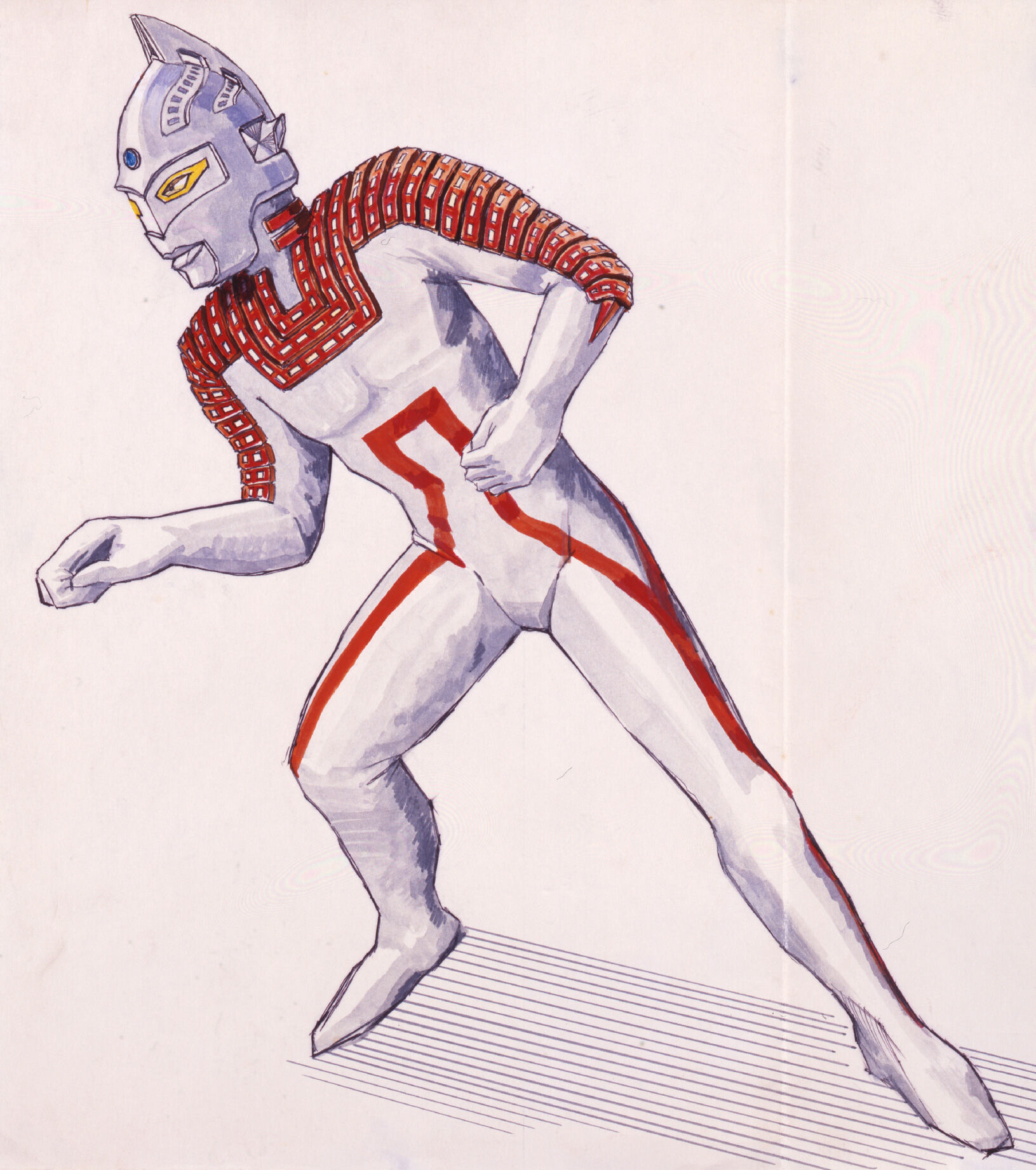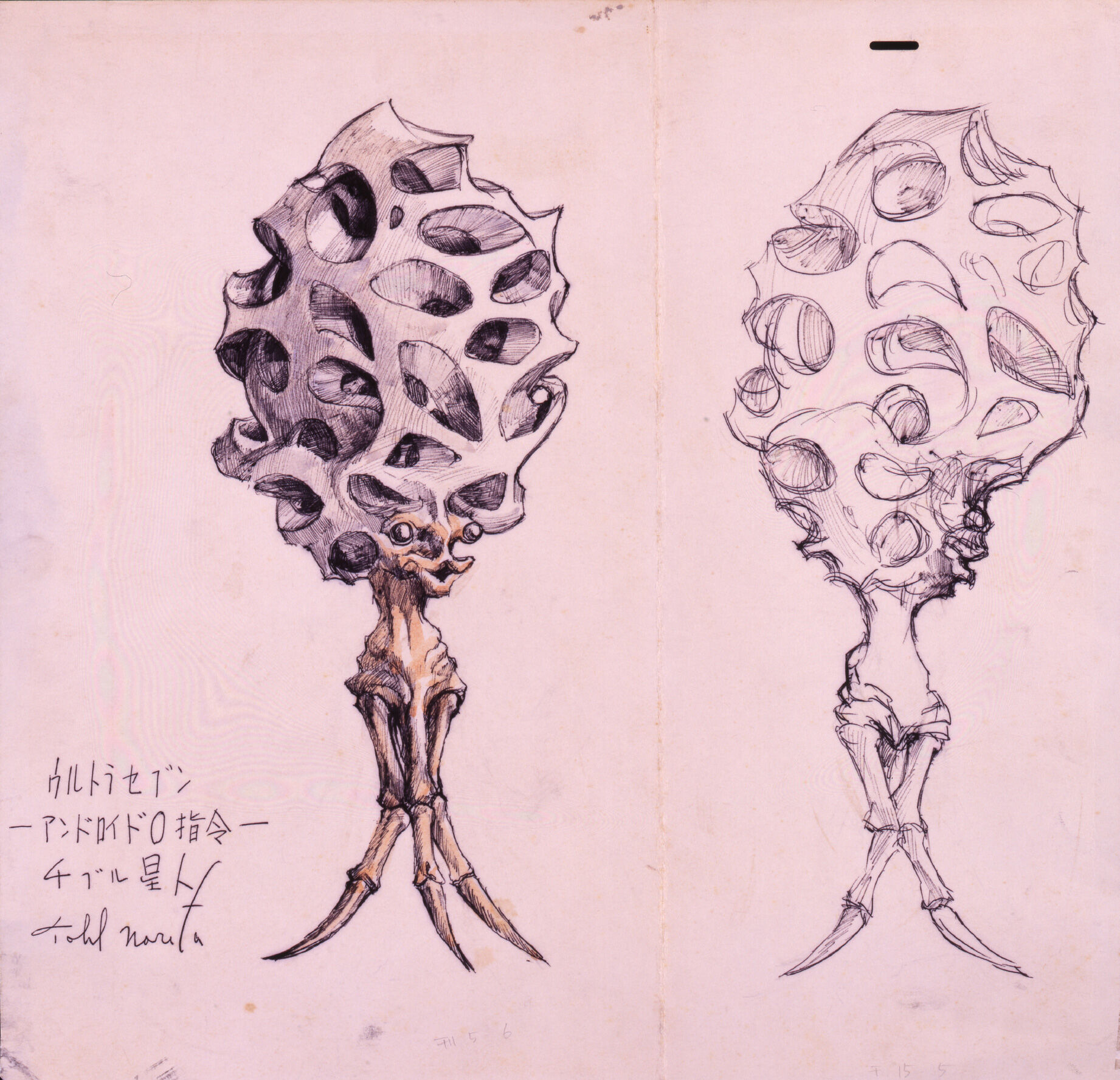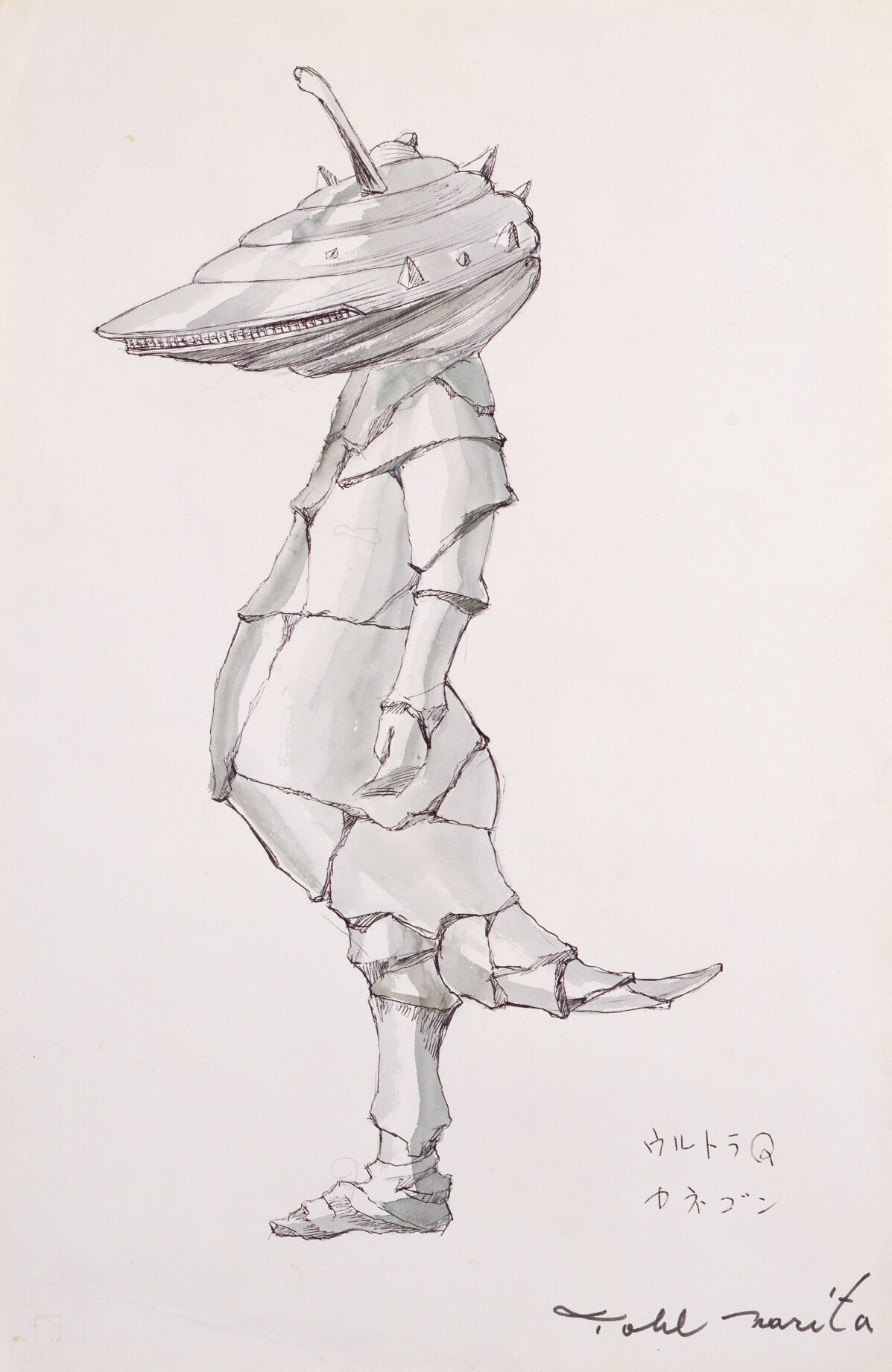NARITA Tohl[1929-2002]
NARITA Tohl was a sculptor and special effects director who designed superheroes, monsters, aliens, and mechanics for the early works in the “Ultra” series (“Ultra Q,” “Ultraman,” and “Ultra Seven”), leaving a lasting impact on Japanese postwar culture.
Although Narita was born in 1929 in Kobe City, his family relocated to Aomori City at the end of the year (both his father and mother were originally from Aomori Prefecture). While a student at Aomori Middle School, he met the painter ABE Gosei , who taught him to emphasize “real sensation” over painting techniques. He also learned a methodology emphasizing the structure, assembly, and movement of subjects from the sculptor KOSAKA Keiji. Later, Narita enrolled in the Western-style painting division of Musashino Art School (now Musashino Art University). Although he originally majored in oil painting, his desire to produce “drawings that lift up off the ground” (Narita) resulted in him switching to the sculpture division in his third year. It was during this time that the foundations of his art were shaped, leading him to create dynamic, tense compositions with freely altered forms that still maintained representational qualities. After graduating in 1954, he presented a sculptural work at the art exhibition of the Shinseisaku Society and joined the production of the movie “Godzilla” (1954). This marked his entry into the world of visual effects. Narita reunited with the special effects director TSUBURAYA Eiji at Toho Studios in 1965 and joined the production of “Ultra Q” midway through on the condition that he would design all of the monsters. During the production of “Ultraman,” screenwriter KINJO Tetsuo requested that Narita design “a form of superhero that has never been seen before.” Thus, Narita created a clean design for Ultraman with a sense of “order” and designed the opposing monsters by incorporating elements of “chaos,” such as deformation and synthesis.
The superheroes and monsters that he designed with his exceptional artistic sensibilities are characterized by their intriguing forms referencing works of modern art, cultural heritage, and plants and animals occurring in nature. His consistent approach toward delivering “unpredictability of form” while referencing universally familiar motifs reveals his unwavering artistic convictions.
“Since I am a sculptor, my monster designs are based on form.” Even though he worked on children’s shows, instead of cutting corners, Narita stayed true to his own artistic convictions. The countless superheroes, monsters, and aliens that he created are pioneering examples of works spanning both art and subculture that continue to influence numerous artists today.
After the “Ultra” series, he worked on TV shows such as “Mighty Jack,” “Totsugeki! Human!!,” and “Enban Senso Bankid,” as well as movies such as “The Bullet Train,” “Men and War,” “Children of Nagasaki,” the “Truck Yaro” series, and “Mahjong Horoki.” In his later years, he became engrossed in the study of oni (mythical Japanese demon-like creatures), producing the sculpture “Demon Monument” in the town of Oe in Kyoto Prefecture in 1990. After a lifetime of working in various genres such as painting, sculpture, design, and visual effects, Narita passed away at the age of 72 in February 2002.

《Final drawing B for Ultraseven》
1967
ink and watercolor on paper
39.4×35.0cm

《Ailien Chibull》
1967
ink and watercolor on paper
36.4×36.1cm

《Final drawing for Kanegon》
1965
ink and watercolor on paper
34.5×22.2cm

